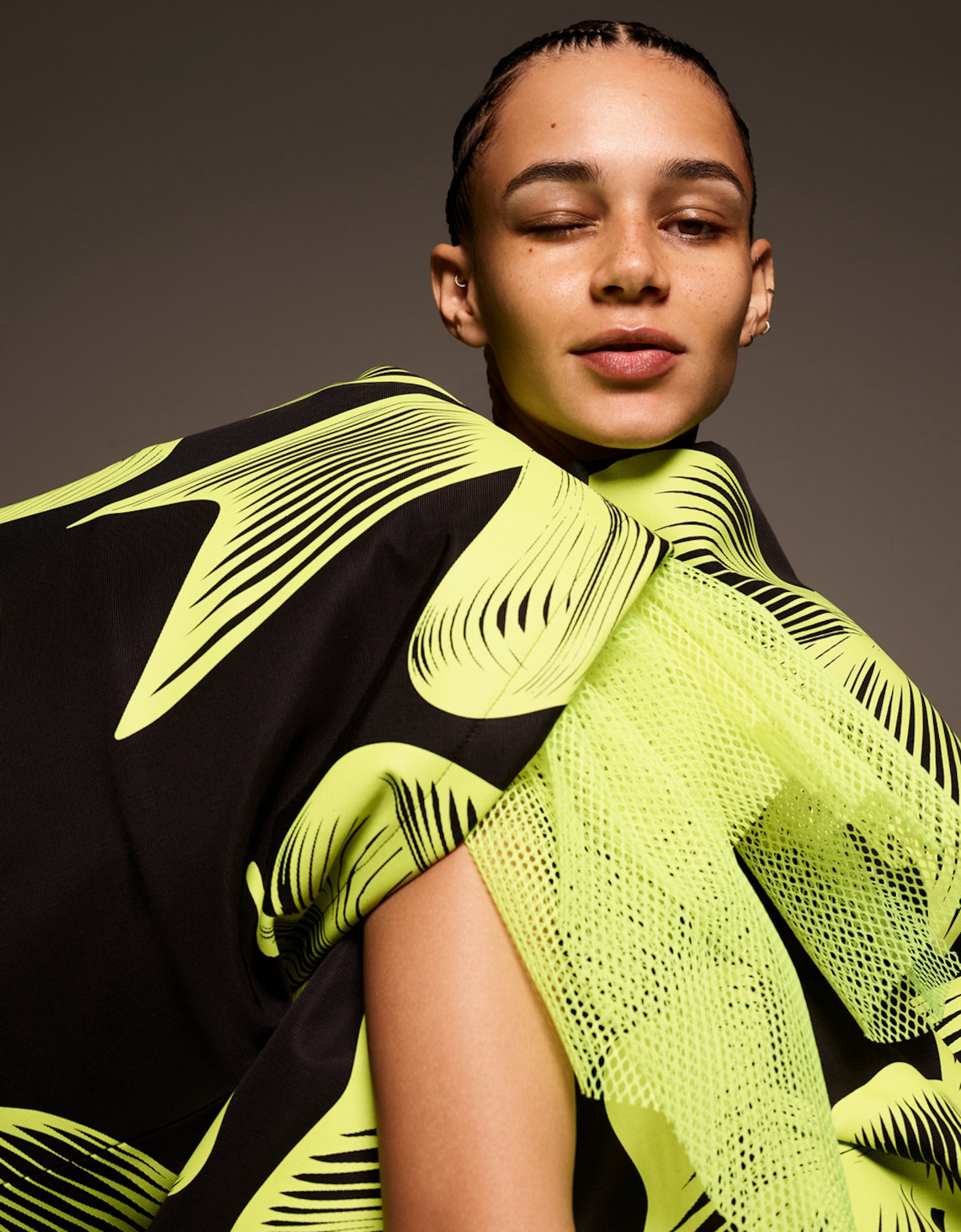This story originally appeared in i-D’s The Out Of Body Issue, no. 367, Spring 2022. Order your copy here.
Over the course of her decades-long career, Rei Kawakubo has been ascribed a kind of prophetic power, her oblique, sparing statements both on fashion and the world adopting a seismic significance among her acolytes. The designer – who is renowned for her deliberate detachment from fashion’s conventions, and a direct defiance of its norms – isn’t in the business of decoding her collections for journalists. In lieu of explanatory show notes, she issues short statements or quixotic phrases to accompany her seasonal presentations, while she remains a famously reluctant interviewee. Instead, she prefers her work to speak for itself: “The process is not something I understand, so it’s not easy to talk about,” she once told me. “But what you feel is free: there is no right or wrong.”
Accordingly, the experience of attending a Comme des Garçons show has become fashion’s equivalent of a seasonal pilgrimage: an opportunity to be immersed in a world of Rei’s design, with her lack of elucidation often prompting a profound and personal engagement with her pieces. Hers is a singular approach, and one that makes her impact all the more compelling – perhaps most of all since 2013, when she decided to eschew the idea of making clothes altogether.
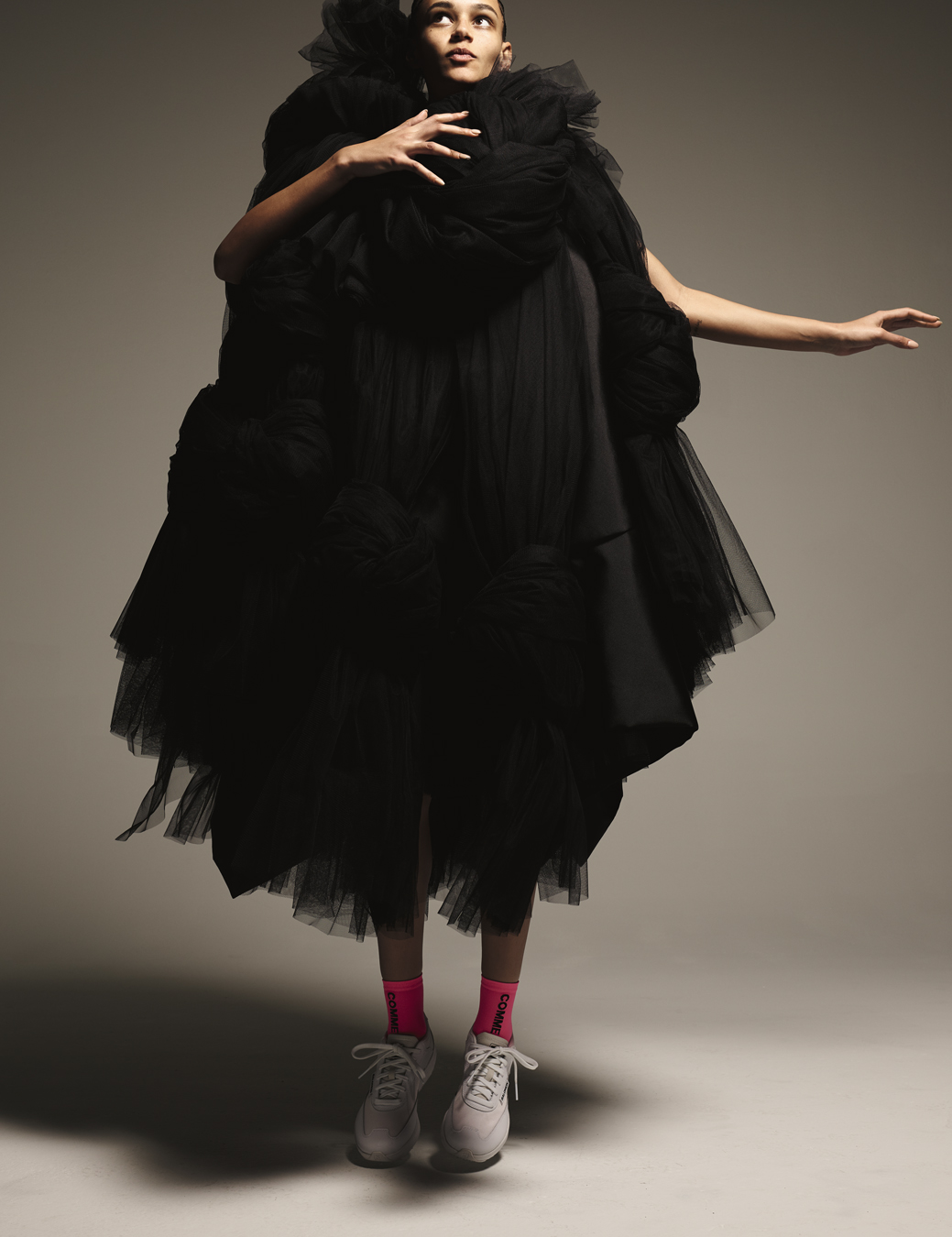
Instead, on her runways since, she has been interested in the idea of presenting “not clothes”: giant, sculptural shapes which transform the wearer, proposing entirely new ways for women to take up space and – particularly for us women in the audience – provoking moving meditations on female bodies within an industry that often celebrates them only within remarkably restrictive parameters. “To make a form in which a woman looks pretty in the conventional way is not interesting for me at all,” she once said. Instead, she has regularly chosen to reconfigure ideals of beauty through her own, transformative gaze.
Rei’s relationship to the female form holds immense significance in fashion history: her infamous SS97 collection, Body Meets Dress, Dress Meets Body, colloquially remembered as the “lumps and bumps” collection, presented a radical distortion of its models’ bodies. Pieces inset with goose down appendages, or swollen with bulbous protrusions, sculpted silhouettes that taunted ideals of feminine seduction to the discomfort of an audience more accustomed to clothing which contorted bodies into conventions of desirability.

Then, for SS14, the designer rejected the body entirely – as she said at the time, “The only way to create something new was to start without the intention of making clothes.” For that first collection of this new chapter, there were no toiles, no fittings on the body – and, through a collection that stepped away from the human figure, her creativity was emancipated anew.
“People should not wait for an outside force to change themselves. The change must come from inside.”
From then on, she dramatically evolved her transfigurative investigations, exaggerating codes from her own archive until they almost drowned the women wearing them (SS17), or trapping her models in armless evocations of Venus de Milo silhouettes (AW17). In SS19, she stuffed models’ stomachs to present the illusion of pregnant bellies exploding through business tailoring; elsewhere, flayed fabrics and clinking shackles made for a visceral exploration of the enslavement of womanhood.
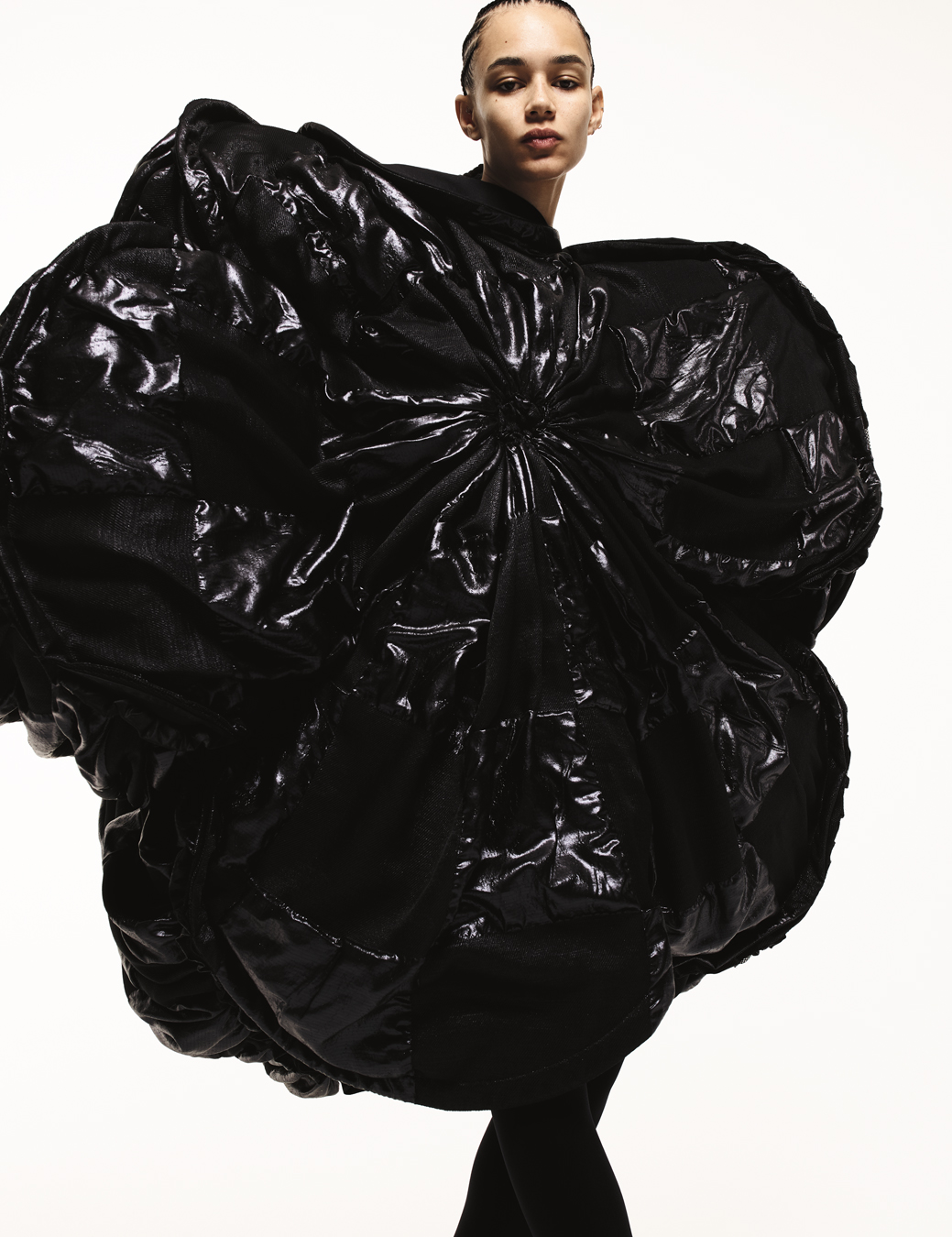
In a statement issued after that show, she expressed that: “Ever since Comme des Garçons was labelled Comme des Garçons, I have worked with the conviction to make clothes that are new and strong, and that stimulate the heart and push ahead in order to live… Comme des Garçons from now on is not about outwardly evident design and expression, but about the design of content, about what’s deep inside.”
Her latest collection, presented on a small runway in Tokyo (travelling to Paris and staging full-scale shows there has recently been prohibited by the pandemic and so, in 2020, they returned to her home city for the first time since the early 80s) appeared a progression of that freedom. “I want to avoid the limitations of the body. It’s a hindrance,” she wrote over email (perhaps unsurprisingly, Rei is still yet to convert to Zoom). “When I start to work, the awareness of making clothes is not there. I don’t worry about whether you can wear it, because that would restrict the making of something new.”
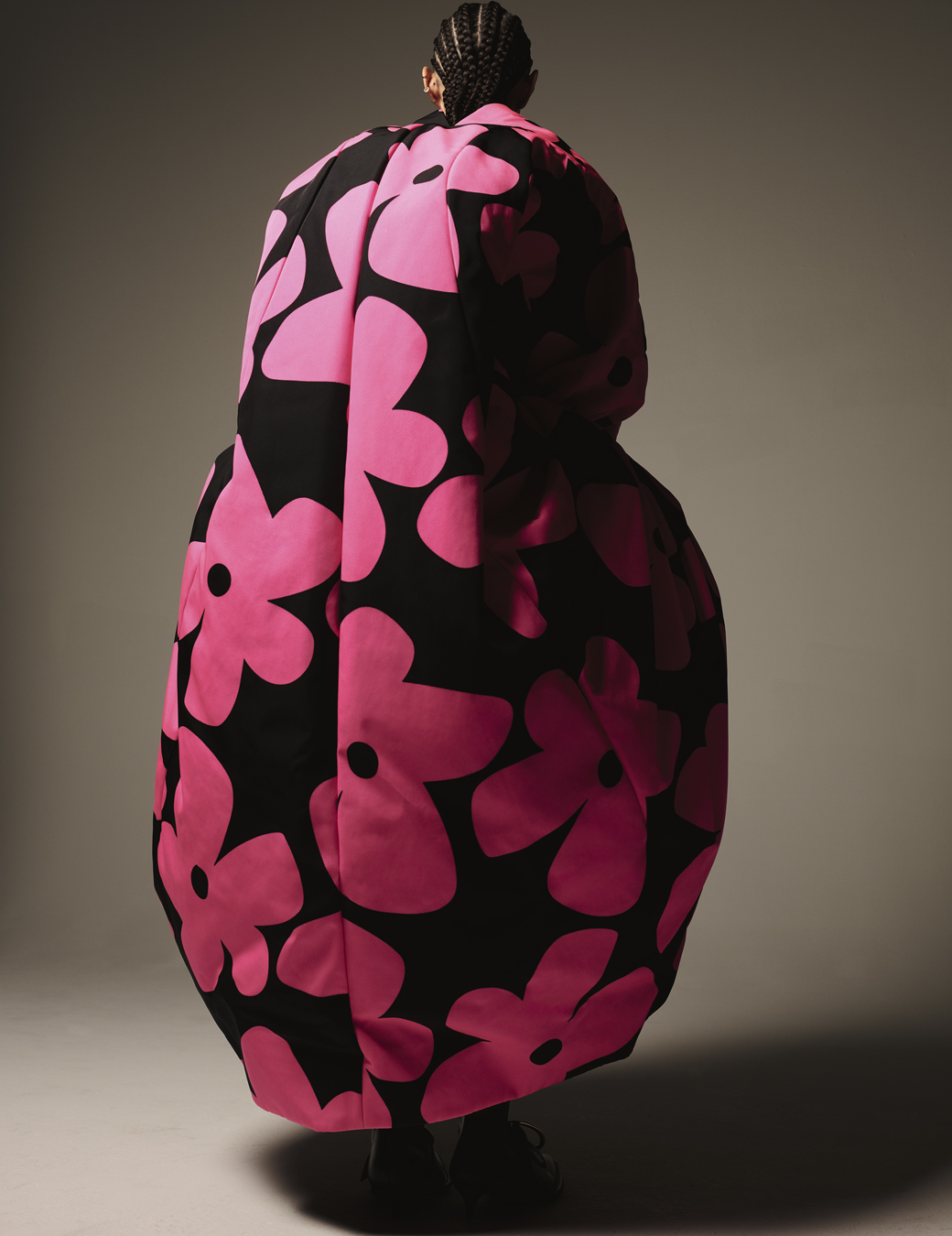
So instead of what she derides as “easy clothes” – that is “clothes that do not express who you are, clothes that you can get away without thinking about, clothes, for example, that are ok only because they cover the body or keep the cold out” – she offered more “not clothes”. This time: giant shapes printed with bows and exploding tulle protrusions or dangling jellyfish appendages, weirdly undulating abstractions, and enormous flowers sculpted seemingly from bin bags.
“I want to avoid the limitations of the body. It’s a hindrance.”
The pieces themselves were monumental – oversized to the point where models needed to side step out from backstage onto the catwalk – but rather than swamping bodies, they instead appeared to expand the parameters they occupied in the world, literally amplifying the place of women within it. With willfully naive prints and headpieces that resembled those of plasticised dolls, there was something particularly charming about their impact, almost as though a child’s drawing had moved off the page and come to life. “What I think after more than 40 years looking non- stop for something new, is that simple is strong – we need to keep throwing away non-essential things, so the simple thing you would arrive at would be strong,” she said. “This work is the hardest, but through the act of throwing away work, what remains is beautiful.”
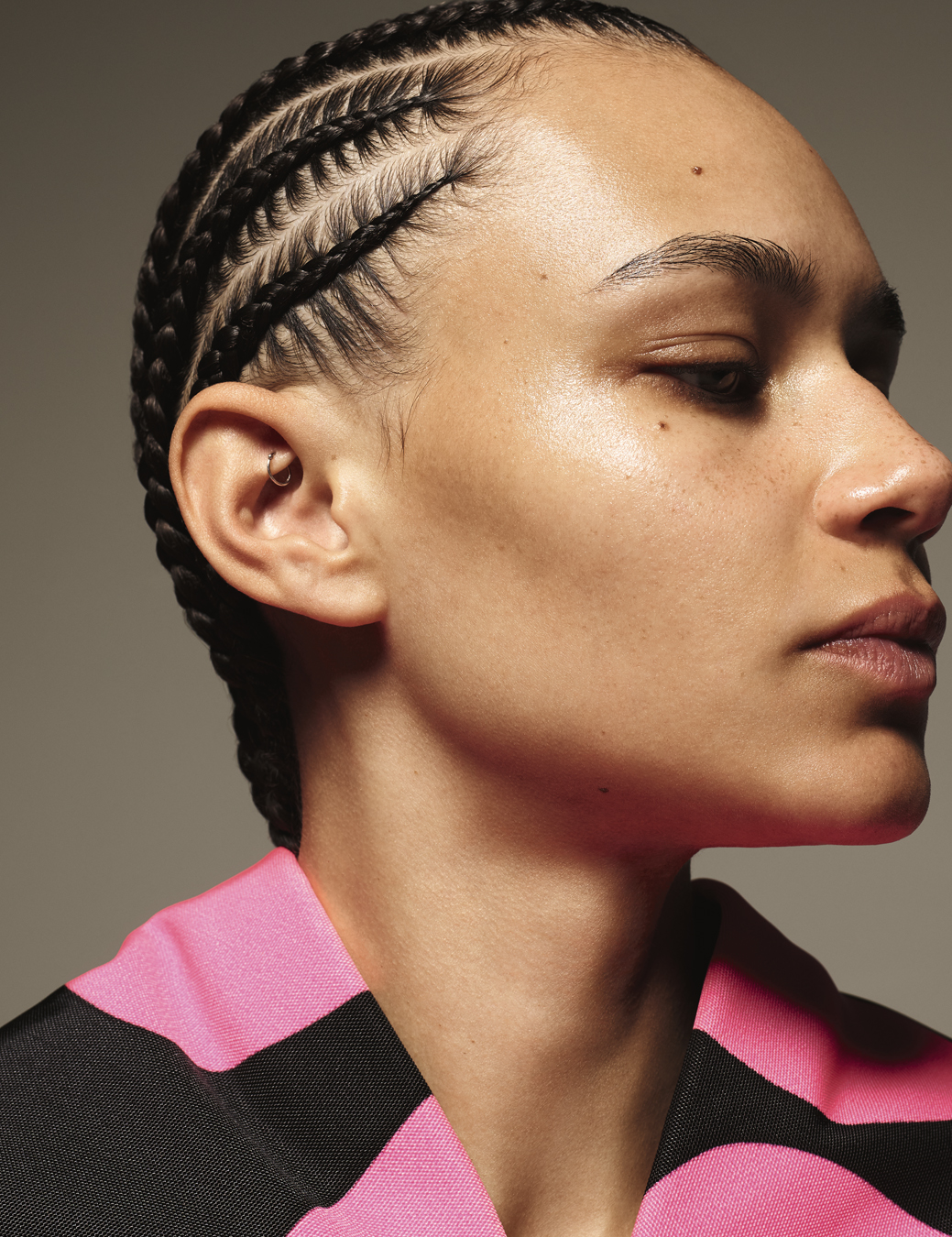
There is a profound beauty to seeing women’s bodies liberated thus – a sentiment which speaks to the very core of the brand Rei has built. With a 50-year career and a thriving business rooted in radical creativity and uncompromising individuality, she presents a powerful template for female autonomy. “I make clothes for strong women,” she once told me. “Women who wouldn’t necessarily care what their husband thinks – or a lot of other people.”
Those who most proudly dress in her “not clothes” certainly describe a powerful sense of freedom found within them, even when their arms might be pinned to their bodies, or their ease of movement restricted. “It’s a love story; it’s difficult to put into words,” reflects Michèle Lamy of why she likes to wear Comme des Garçons, perhaps more than anyone else in this world. (Upon attending the Met exhibition of Kawakubo’s work, she recalls noting that she was in possession of the significant majority of pieces on display). “It’s not about feeling comfortable or uncomfortable. It’s a feeling you want to keep, a feeling you want to have. I feel great in it. And I think I look good in it.” (She does) One piece, she explains, she was wearing so much that it ended up a little heavy on her neck – “but it’s building muscle!” she laughs “You can play with your body, and she is an extraordinary artist. What she makes is like a poem, like an expression of this world. The pieces make you dream. The feeling when you are in them is like you are naked, like you are a floating cloud of fabulousness.”
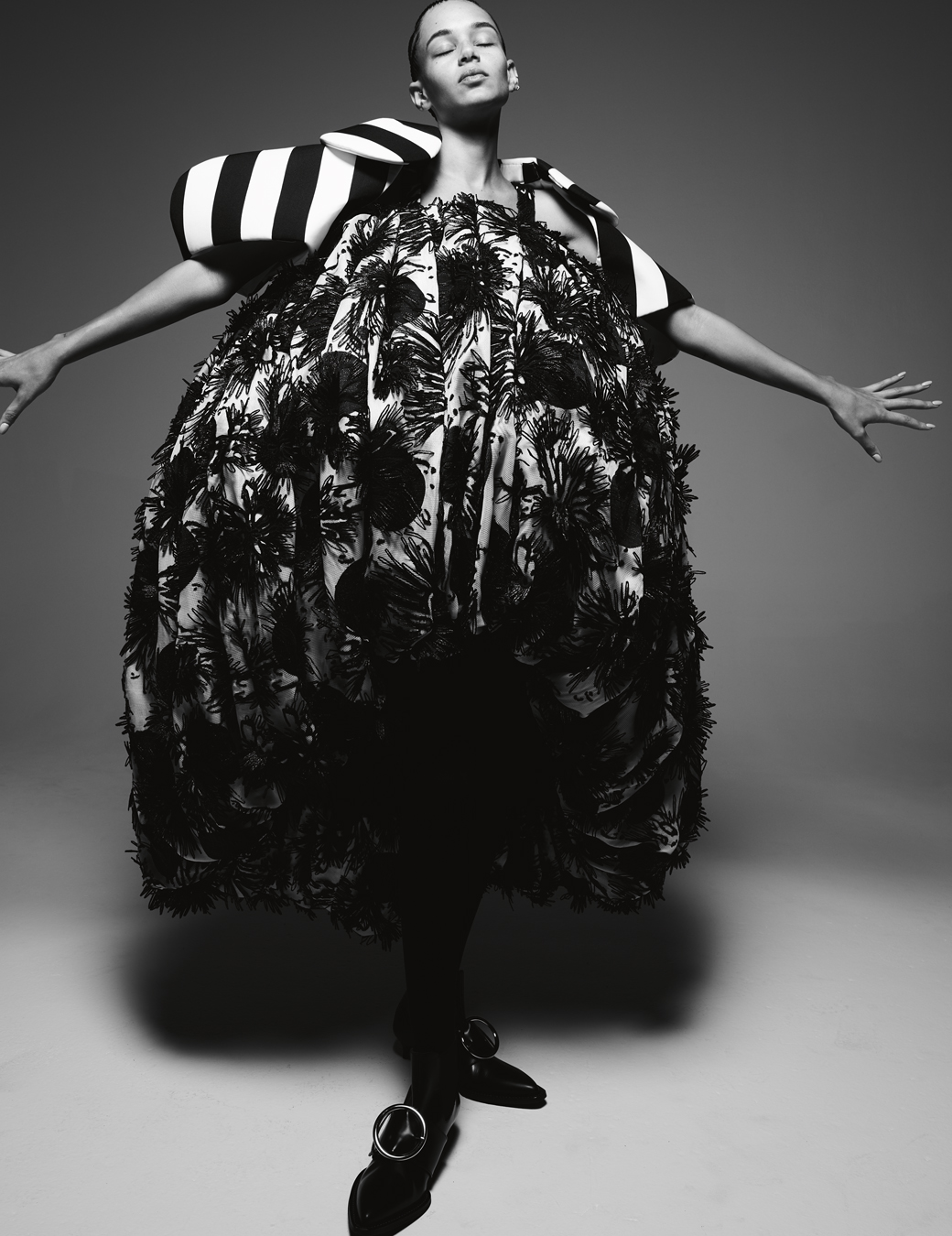
“Comme des Garçons is more than clothing for me; it’s a way of life. Rei gives me my voice,” explains Michelle Elie, a fervent collector whose first piece was bought from the “lumps and bumps” collection, and worn for a pregnancy portrait of her son, and who will happily enlist her husband and the use of a straw if she gets thirsty but her outfit offers no armholes. “It takes a powerhouse woman to translate her designs for the everyday, because it is definitely not easy wearing her runway pieces – but there is this unspoken and indescribable strength that I get with them. I love the challenge; they fulfil a need to push myself out of my comfort zone.”
But Rei resists the idea that her role is as anything other than a catalyst for those already inclined towards such self-reflection. “I think people should not wait for an outside force to change themselves,” she explains. “The change must come from inside. If one can change oneself then one’s fashion will change. Fashion itself cannot change a person per se. I think fashion can only help in the change of oneself.”
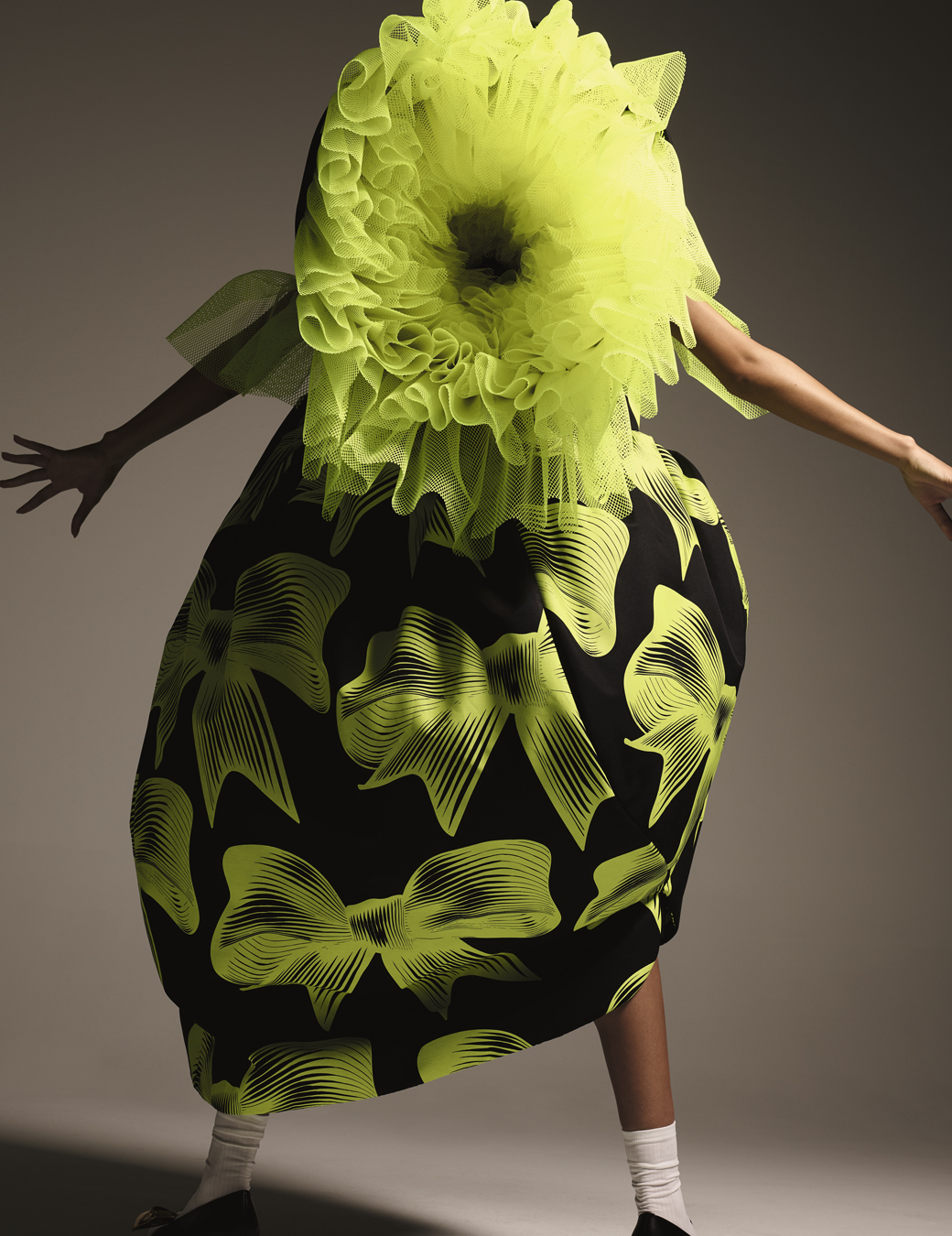
After two years where loungewear has taken centre stage, the impact of clothing on our identities has rarely felt more pronounced; the lack of opportunity for self-expression stifled by enforced isolation and remotely-arranged creativity. “All behaviour having been restricted, creative action has stopped. I feel I have lost the chance in these two years to make many things,” Kawakubo notes. “I don’t know yet the effect, although it is certain that there hasn’t been much progress in these two years. The feeling of ‘hunger’ (appetite to change, find new things, make a better world) has been curtailed by the lack of physical freedom which looks like it hasn’t resulted in any new power. It’s a pity because such a hunger can result in a good power.”
While her position as fashion’s oracle certainly remains intact, this latest collection joyfully proves Kawakubo fallible – after all, she has certainly pushed through her personal frustrations to express a radical kind of joyful liberation. Here is good power: one which expresses a limitless vision of womanhood, unbound by convention or preconceptions. It’s the sort that we are hungry for.
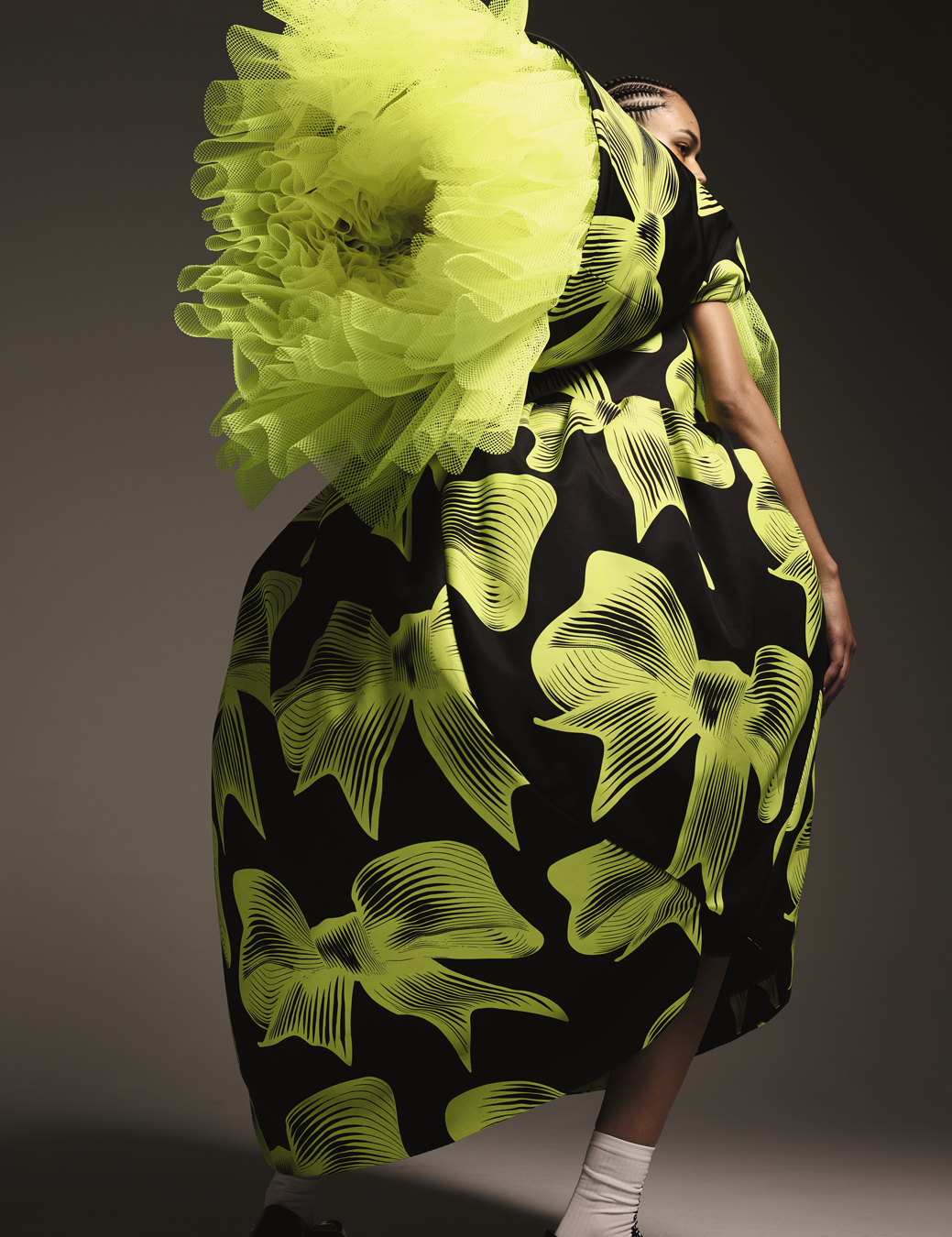

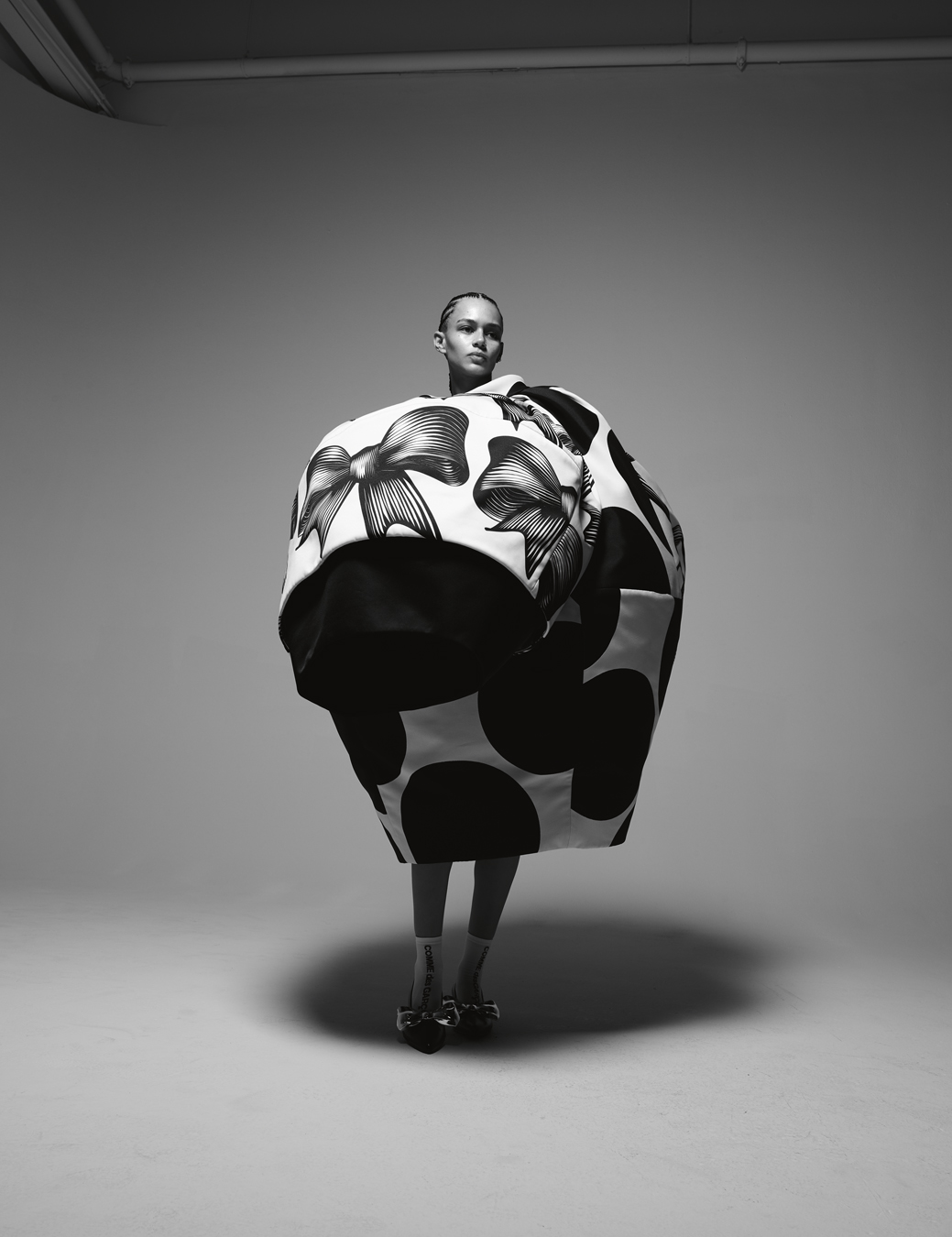
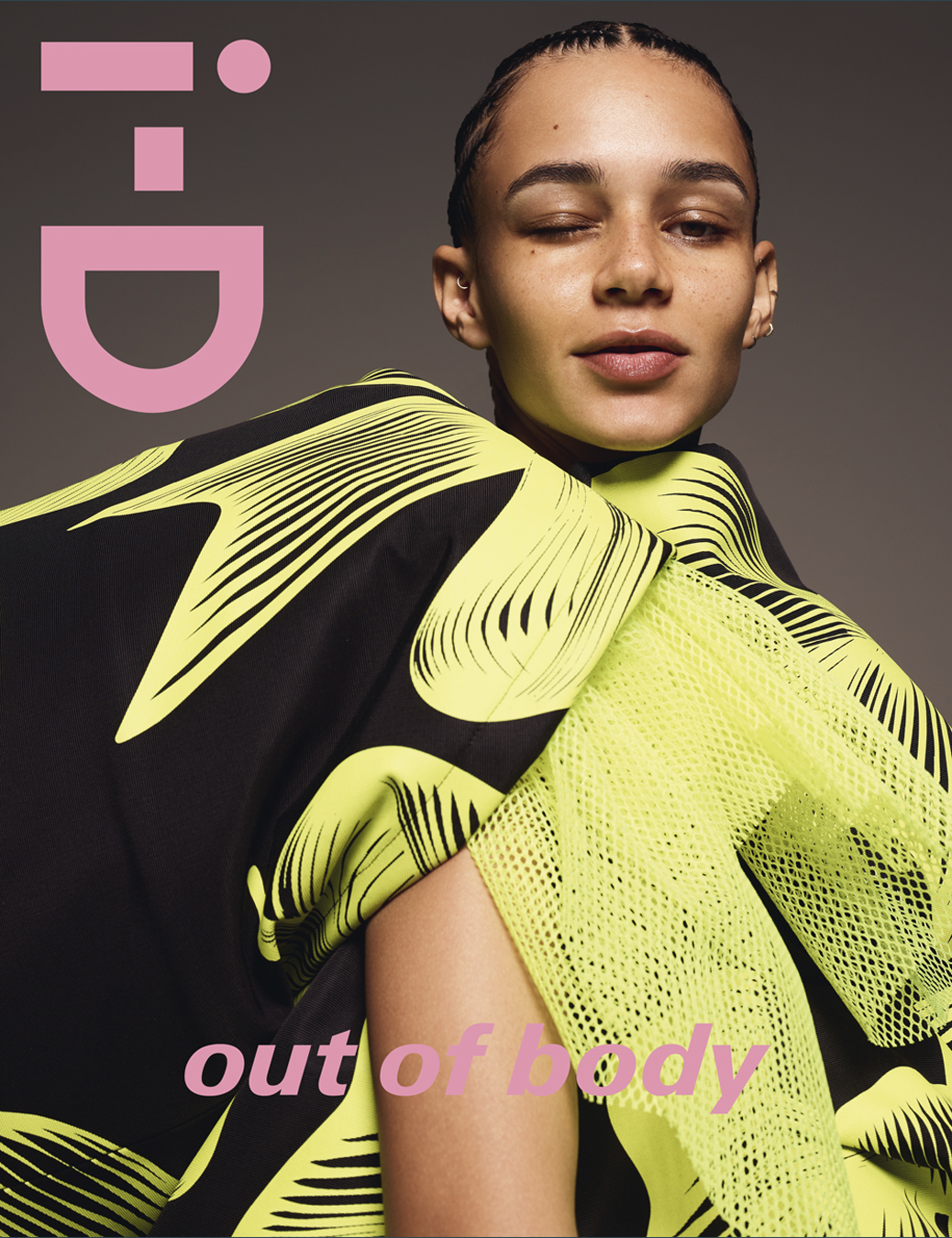
Follow i-D on Instagram and TikTok for more on fashion.
Credits
Photography Amy Troost.
Fashion Alastair McKimm.
Hair Tashana Miles at The Chair Beauty Loft using The Chair Beauty products.
Make-up Dick Page at Statement Artists.
Nail technician Michina at Art Dept using Dior Vernis.
Photography assistance Jeremy Hall and Ben Kasun.
Digital operator Kasandra Torres.
Styling assistance Madison Matusich and Milton Dixon III.
Production Alex Royals.
Casting director Samuel Ellis Scheinman for DMCASTING.
Model Binx Walton at Next.
All clothing, socks and shoes (worn throughout) COMME DES GARÇONS.
